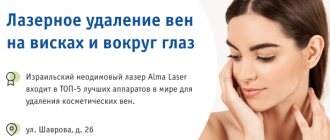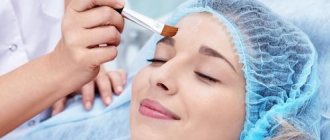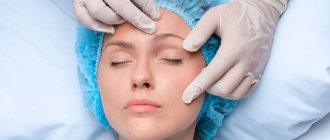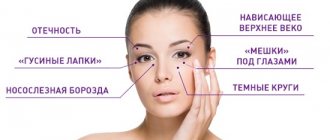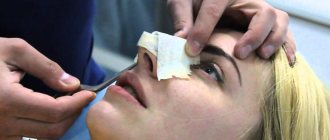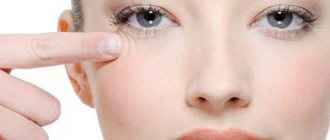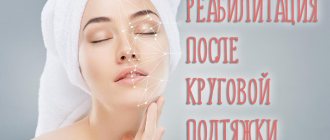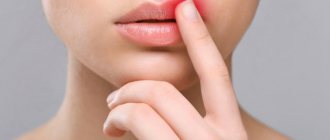The culprit of the aging process of skin aging is the biological extinction of cell activity. Cellular restoration processes gradually decrease, the body produces less and less hyaluronic acid, collagen and elastin are also produced in limited quantities. The tissues cease to retain water, and with it, elasticity and ability to contract are lost. The force of gravity leads to drooping, or ptosis, of the tissues; the face begins to tend downward, no longer forming the shape of a heart, as in youth, but a triangle with the base at the bottom.
After thirty years, the process of formation of nasolabial folds, small and larger wrinkles, sagging cheeks and the appearance of other age-related signs is irreversible. Cosmetic tricks and hardware techniques become ineffective, and the best way to regain a youthful face is a surgical facelift, called facelift .
Indications
In the vast majority of cases, the basis for facial skin tightening surgery is prolapse of soft tissues. You can determine whether you need a facelift based on the following criteria:
- sagging forehead and eyebrow skin
- deep nasolabial grooves
- eyelid ptosis
- wrinkles in the temporomygomatic region and in the bridge of the nose
- presence of bags under the eyes
- drooping of the outer corners of the eyes
- double chin
- deep vertical wrinkles on the cheeks
- "shaved"
- pronounced wrinkles and folds on the neck
Contraindications to surgical facelift
So, who should not undergo a surgical facelift? Since facelift is not considered an intervention for life-saving reasons, there are many such points:
- pathology of the cardiovascular system;
- renal failure;
- poor blood clotting;
- allergies to medications used during the intervention and subsequent rehabilitation;
- benign or malignant neoplasms;
- diabetes;
- infectious diseases.
Some of the points discussed are not absolute contraindications. With a certain adjustment of the health status, surgery is possible, but the surgeon will decide on the necessity and legality of plastic surgery.
Doctors are reluctant to perform facelifts on women who are overweight. This is explained by the large percentage of unsuccessful results in this particular category of patients.
Preparing for surgery
Before the operation, the patient must undergo a complete medical examination. The surgeon needs comprehensive information about the patient's health status in order to assess possible complications. It is extremely important for the patient to inform the doctor about hidden problems, and in particular those related to blood pressure, blood clotting, or the tendency of tissue to become excessively scarred. You should also inform about the medications you are taking, especially those that affect blood clotting. The surgeon should also be aware of whether the patient smokes or drinks alcohol.
Only after collecting the necessary information about the patient, the specialist begins a detailed examination of his face. During the operation, the anatomical structure of subcutaneous fat and muscles, the facial skeleton and the general condition of the skin are taken into account. At the initial consultation, the surgeon discusses the results of the future operation with the patient and suggests possible alternative facelift techniques. Patient preparation begins 10 days before surgery. During this period, quitting smoking and alcohol and taking hormonal medications is indicated. The day before the operation, you are allowed to eat only liquid food, and on the day of the operation you must completely stop eating.
The operation is performed under general inhalation anesthesia. Mini-facelift (local lifting) can be done under local or intravenous anesthesia.
Check-lifting
Check-lifting (or cheklift) is a modern technique for correcting the midface area, developed in 2004. Initially, the purpose of this operation was to correct the consequences of unsuccessful plastic surgery of the lower eyelid - to eliminate a complication called a “round eye” or inversion of the lower eyelid. The developed lifting technique turned out to be so effective and low-traumatic that today this operation has become one of the most popular methods for correcting age-related changes in the midface. Typically, a check-lift is combined with blepharoplasty of the lower eyelids, achieving rejuvenation of the entire middle part of the face from the molar area, cheekbones and cheeks to the nasolabial area.
This technique has a number of advantages over other lifting technologies:
- The operation is performed through single incisions along the edge of the lower eyelid (as in lower blepharoplasty). After the check-lift there are no additional scars left.
- This technique reduces the duration of the operation (up to 70 minutes) and minimizes the usual operational risks;
- Check-lifting is a non-invasive operation, so it is usually performed under local anesthesia (general anesthesia is used in rare cases, mainly at the request of the patient), and the recovery period is 10-14 days;
- Tissue tightening is carried out from the bottom up (and not diagonally to the temple, as with other lifting techniques). The tissues return to their original position (without displacement to the periphery), which ensures the most natural result;
- Despite the minimal invasiveness, check-lifting provides no less long-term effect than such a serious operation as a circular facelift (on average about 7 years).
- This method eliminates such an unpleasant complication as the “round eye” effect, which sometimes happens after conventional lower eyelid blepharoplasty.
However, for all its advantages, this operation is not an absolute panacea. Plastic surgery also has other modern techniques for plastic surgery of the midface. To select the correct lifting technique, many factors are always taken into account, including: individual structure, the severity of age-related changes and the goals that the patient sets for the plastic surgeon.
Photo: check-lifting and lifting of eyebrows and eyelids. Surgeon I.A. White.
Rehabilitation period
The patient is observed in the hospital for 2-3 days after the facelift. If the patient has chronic diseases, the length of his stay in the hospital may be increased. On the first day after the operation, the dressing is performed, then the doctor prescribes antibiotics and painkillers to the patient. After 4 days, a decrease in swelling is observed (the swelling will completely subside in 2 months), a week after the facelift, the sutures are removed. The patient can return to a normal lifestyle after 2-3 weeks. For two months, the patient is advised to avoid visiting the sauna and solarium, avoid heavy physical activity, do not dye his hair, and give up smoking and alcohol. You can wash your hair and use cosmetics within 3-4 days. To speed up the rehabilitation period, the patient is prescribed physiotherapeutic procedures and lymphatic drainage massage.
The result after surgery can be assessed after 6-8 months. The degree of effect of the operation depends on the age, condition of the patient’s skin, bad habits and lifestyle, and the presence of internal diseases. The same factors influence the duration of the effect after a facelift. Cosmetic procedures, contour plastic surgery, laser rejuvenation techniques, and Botox injections will help consolidate the results. It is recommended to resort to a second facelift no earlier than after 7 years.
Possible complications after surgery:
- bruising and swelling of the facial skin
- temporary hair loss around skin incisions in the scalp
- skin pigmentation
Personal experience: facelift and rehabilitation after it
Plastic surgery is always a unique personal story. The K&Z reader decided to undergo a facelift for a long time, went through it and now honestly shares her experience.
One fine day I looked in the mirror and realized that “I wasn’t young.” My slender figure (weight 55 kg) remained with me, but all the years I had lived “faded away in my face.” At that time I turned 48.
I went to a very good beauty salon, where I did mesotherapy and Botox, pumped up my lips with hyaluronic acid and removed nasolabial folds with it. I started to look much better. I decided to do all of the above, as well as a lot of other good and expensive procedures and did them regularly. So seven years passed. And then I realized: it doesn’t help! The last straw was Thermage, which was so expensive and promised so much. I was thinking about surgery...
It took a total of three years to reach the final decision. I looked closely at the obviously operated television faces and at my friend’s face, which was successfully tightened 12 years ago. I read reviews, studied forums on plastic surgery. I even began to figure out who was promoting a particular surgeon.
I even went for a consultation with one surgeon, whose results were very impressive. And I kind of liked him. But for some reason then I did not choose the date of the operation. After all sorts of comparisons and weighing, I finally settled on another specialist - as it turned out, who had once operated on my friend! And I almost calmed down: I saw the result of his work - a good result - on her face. The plastic surgery clinic in which this surgeon operates operates on the basis of one of the leading clinical hospitals, and the anesthesiologist there has extensive experience. This also seemed very important to me.
Facelift: day of surgery
The day of the operation arrived. The scope of interventions was planned to be large. However, the usual set for a 55-year-old lady: endoscopic forehead lift, lower blepharoplasty, endoscopic midface lift, lift of the lower third of the face and platysmaplasty (this is when the double chin is removed, a clear, as in youth, cervical-mental angle and at the same time the neck are formed gets rid of wrinkles). I had to undergo four hours of anesthesia. Before the operation, I signed a contract and my face was photographed from several angles. I put on correction stockings (to prevent thrombosis), and I was taken on a gurney to the operating room. Time has passed.
...I woke up in a room on a bed with a tight bandage on my head, exactly like Sharikov’s in “Heart of a Dog.” I listened to myself: nothing hurts. When the blindfold was removed at the end of the day, I discovered that I could see almost nothing. The eyes were swollen and swollen, turning into narrow slits! The face - except for a small triangle with a center-nose in the middle - is lifeless, insensitive. I also don’t feel anything in the crown area, behind the ears and above, plus I don’t feel my neck at all! You can only lie on high pillows and on your back.
During breakfast - a new discovery. The mouth barely opens - you can’t get a coffee spoon through. She pecked semolina porridge like a crane visiting a fox.
Daily dressings and facial physiotherapy every day. Three days later, my husband took me home.
Rehabilitation after facelift
At home, I immediately went to bed - weakness. And then it began. There was a feeling that Brownian motion was going on under the skin of the face: something was shimmering, rolling, seething there.
She washed her head, treating it like a Chinese vase, her fingers bumping into paper clips, which, instead of threads, tightly, tightly fastened the edges of the cuts behind the ears and on the crown of the head. Frightening red water flowed from my hair...
Nevertheless, life went on. First, the stitches on the eyelids were removed (literally after two or three days). Then on the head. In the mouth, the stitches should have dissolved on their own. The mouth did not open properly for a long time, a month or more. And when I chewed, my temples twitched—unpleasantly.
When the tight bandage was removed, the face was wrapped in a special elastic mask that supported the cheeks. I began to look like a respectable medieval lady. Everything that is blue and swollen is hidden under the bandage, although my eyes are still “black,” but somehow I’ve already gotten used to it.
The surgeon advised me to warm my face in a bathhouse in a week so that the internal stitches would dissolve better. And not in a bathhouse - with dry heat. I associate dry heat with hot eggs, which are used to warm up sinusitis. At the specified time, I began to boil the eggs and fanatically press them to my cheeks, temples and eye sockets for two hours. And as a result, when I took off the mask, I saw a tumor in the form of a thick caterpillar crawling from the middle of my left cheek to my ear.
Every morning I went to the clinic for physical therapy and left almost reassured by the surgeon’s ironclad convictions that this was a temporary hematoma and it would definitely go away. The “caterpillar” disappeared without a trace after a couple of months.
Then, two months later, my husband and I went to Rome to celebrate my 55th birthday. I was afraid to give an old photo for a visa and took a new one. The swelling had not yet gone completely, but still, what a difference from the previous photo! Now I think: as soon as I wasn’t detained at customs...
Well, the fact that the eyes after lower blepharoplasty were a little watery and double in one was nothing, nothing.
Slowly, slowly, the numbness of the cheeks, forehead, and crown of the head receded. Gradually the ears became “mine” again. Small scars, including those under the chin, healed and became invisible. I sighed calmly.
Results: time of joy
How do I feel now, eight months later? Great joy. Yes, not everything about my face suits me, there are still bruises under my eyes, and they bother me. Looking closely at my reflection, I see some other little things. It would be possible to raise the corners of my eyes higher, there are still some wrinkles left... But all this is nonsense compared to the general feeling of youth in my face that has returned to me!
My brother’s wife once remarked: “You see how good it is that your face has gained weight. It would have been like this a long time ago. You need to eat, not diet. Now you look good." The mother-in-law, peering at the Skype screen, said: “And you seem to have lost weight. But you look good."
The mammologist asked what day of my cycle it was, since I was going to have a mammogram. “I’ve been like this for three years now!” — I reported cheerfully. “Well done, I would never give you your age.”
And recently, my random travel companion Igor, without hesitation, determined my age - 38 years. She told the truth - I didn’t believe it. She said she was joking - she calmed down. But he was surprised: “All women reduce their age, but you are strange - you increase it!”
Expert opinion
Lola Babaeva, dermatocosmetologist, dermatocosmetologist at the Mont Blanc Clinic of Plastic Surgery and Cosmetology
Facelift is an operation that requires rehabilitation procedures. These include physiotherapeutic and injection treatments. Rehabilitation usually begins on the fourth or fifth day after surgery. The rehabilitation program is developed jointly by a plastic surgeon and a cosmetologist. There are patients who are reluctant to come for procedures for the first time, and then simply run to rehabilitation. Because they feel and see how the face literally comes to life!
Microcurrent therapy can be noted as one of the key rehabilitation measures - the impact on tissues of low-frequency pulsed currents of ultra-weak strength in order to restore cellular metabolism. Thanks to microcurrents, superficial and deep lymphatic drainage of tissues is carried out; cell detoxification occurs; the process of formation of new blood vessels (neoangiogenesis) starts, and normal blood supply is restored. The procedure has an anti-edematous effect and improves complexion. Using electrophoresis, special preparations and enzymes (longidase, hyaluronidase) are introduced into the skin, which have a powerful antioxidant effect, relieving swelling and inflammation.
The standard course of microcurrent therapy is 10–15 procedures, three sessions per week.
Gymnastics for the face (face building)
Well, for those who are afraid of surgical manipulations, non-surgical facelifting or facebuilding is intended. This is a simple and enjoyable way to regain youth for free and at home.
A little willpower and effort, and this is the effect. Facial muscles are strengthened and tightened, folds are smoothed out, wrinkles around the eyes and mouth disappear.
Let's see what advantages home lifting has:
- there are no restrictions and contraindications (except for laziness);
- ease of execution;
- procedures can be carried out at any time;
- there is no need to undergo surgery.
To achieve results, it is enough to spend 15–20 minutes a day. It is better to do exercises in front of a mirror, having first cleansed the skin of your face and washed your hands. All exercises must be done clearly, slowly and without interruption.
There are many different complexes for face lifting, but they all work on the same principle. Therefore, we will consider the most popular and effective ones.
Runge system
Exercises according to the Senta Maria Runge method are isometric gymnastics and give excellent results. Some ladies already see a younger and refreshed face in the mirror after 2–2.5 months.
The principle of the Runge system is to put a load on one muscle group. The rest are in a relaxed state at this time.
For a stable and long-lasting effect, exercise strictly according to the plan: five days of gymnastics, two days of rest. The complex should be performed for 4 months in a row. Then take a break for 30 days and resume charging.
All exercises by Maria Runge are aimed at correcting already visible signs of aging, and are therefore recommended for women over 30 years of age.
Galina Dubinina system
Physical education for the face according to the method of Galina Dubinina (fitness instructor) is collected from different programs and seasoned with breathing exercises, her own experience and elements of yoga. You can perform such exercises for the face from the age of 25.
Let's see what Dubinina's technique includes:
- exercises for the eyes, eyelids and neck;
- gymnastics for morning and evening;
- breathing techniques according to the BodyFlex program;
- massage of biologically active points of the face.
Perform each exercise at least 12 times. If you feel discomfort or don’t want to exercise, don’t suffer. Reschedule your session for another time. A weekly program gives a good effect: 5 days of classes, 2 days of rest.
You can watch Galina Dubinina’s facelifting gymnastics on video:
In addition to well-known systems, there are not so popular, but no less effective. This is the Facebook building of the young coach Anastasia Burdyug and the gymnastics of Evgenia Baglyk. The techniques also include exercises aimed at tightening facial muscles, smoothing wrinkles and preserving youth.
Thus, you can choose the complex you like and practice rejuvenation without leaving your home.
